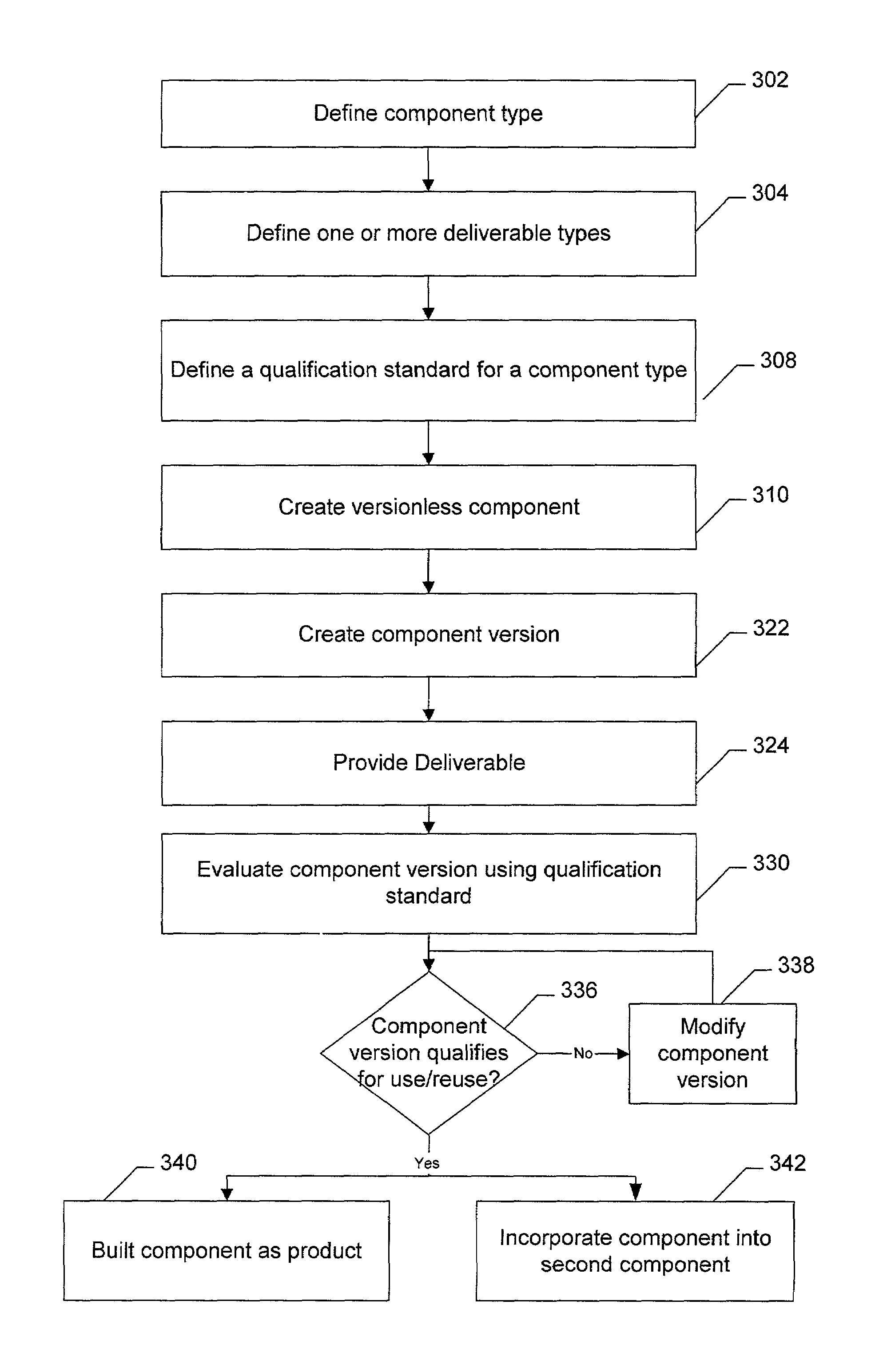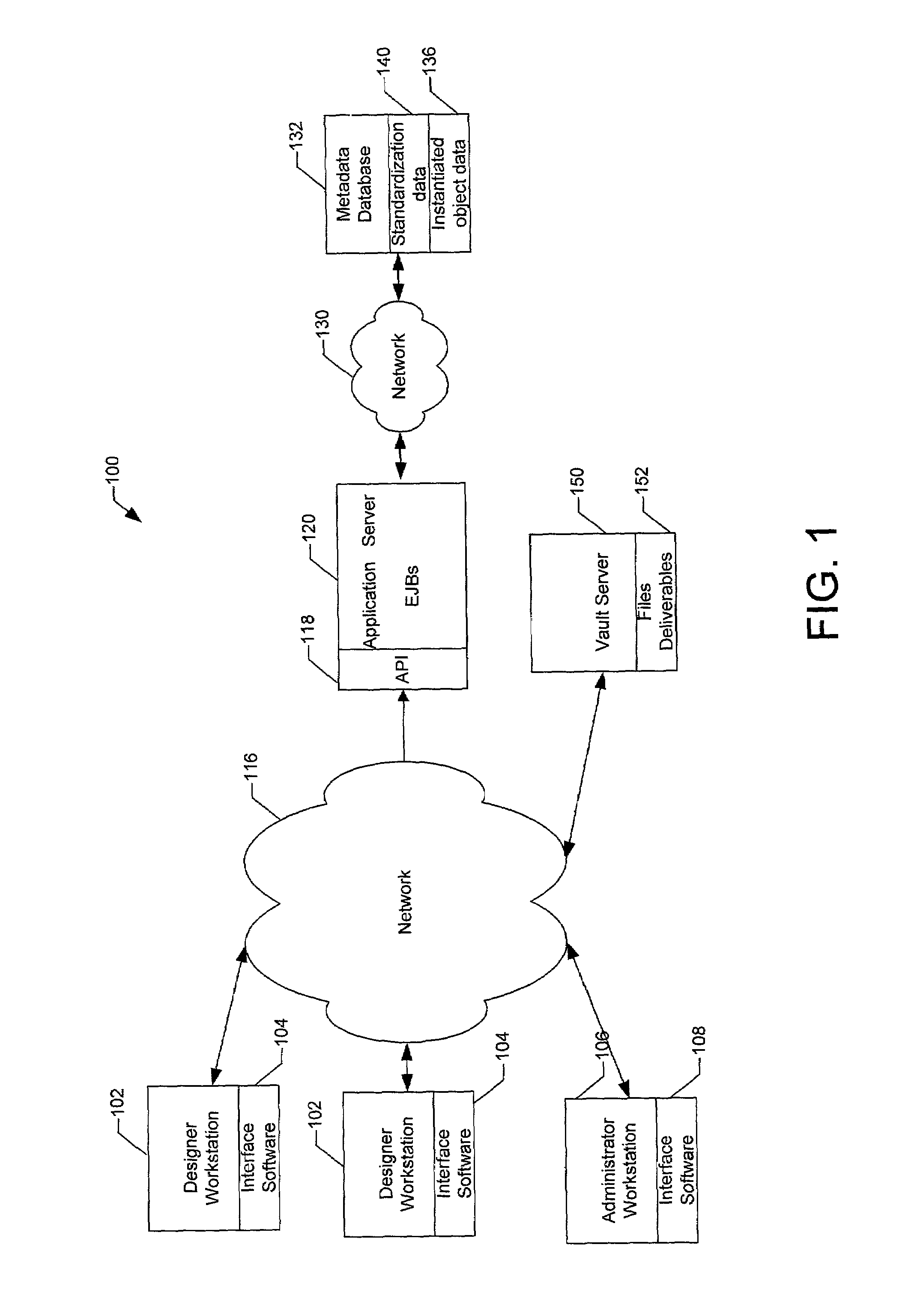System for intellectual property reuse in integrated circuit design
a technology of integrated circuit design and intellectual property, applied in the field of reusable circuit design components, can solve the problems of inability to meet the needs of users, physical circuits that do not behave like ideals, and design that works as a model may not work when produced as a physical devi
- Summary
- Abstract
- Description
- Claims
- Application Information
AI Technical Summary
Benefits of technology
Problems solved by technology
Method used
Image
Examples
Embodiment Construction
[0027]A system for creating and managing reusable IP designs and using the IP in other IP and in system-on-chips designs is described. In the following description, for purposes of explanation, numerous specific details are set forth in order to provide a thorough understanding of the present invention. It will be evident, however, to one skilled in the art that the present invention may be practiced without these specific details.
[0028]To facilitate understanding of the invention, applicants first define terminology and describe certain aspects of the invention in more detail.
Definitions, Concepts, and Structure
[0029]The commonly used term IP represents a particular reusable design block such as a CPU, a timer, or a complete SoC. The invention can support more than just IP components; it can be configured to store virtually any type of component.
Component
[0030]The term “component” is used to mean a reusable design block typically supported by both meta dat...
PUM
 Login to View More
Login to View More Abstract
Description
Claims
Application Information
 Login to View More
Login to View More - R&D
- Intellectual Property
- Life Sciences
- Materials
- Tech Scout
- Unparalleled Data Quality
- Higher Quality Content
- 60% Fewer Hallucinations
Browse by: Latest US Patents, China's latest patents, Technical Efficacy Thesaurus, Application Domain, Technology Topic, Popular Technical Reports.
© 2025 PatSnap. All rights reserved.Legal|Privacy policy|Modern Slavery Act Transparency Statement|Sitemap|About US| Contact US: help@patsnap.com



